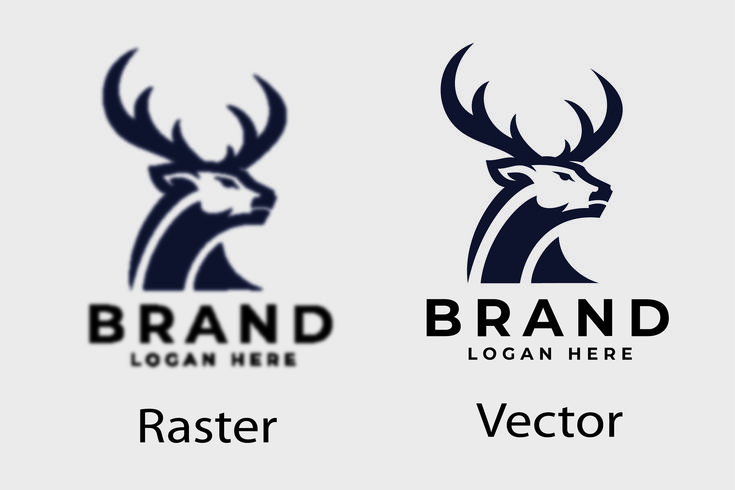Menu

If you’ve ever designed a logo, edited a photo, or downloaded an image online, you’ve likely encountered both raster and vector files. But what exactly sets them apart—and why does it matter?
Understanding the difference between raster and vector graphics is essential for anyone working in design, branding, or web development. Using the wrong format can lead to blurry prints, slow websites, or poor scalability. In this guide, we’ll break it down in simple terms. You’ll learn which format to use and when—and if you’re looking for high-quality vector assets, SeekVector offers a library of free resources ready for both print and digital use.
Raster images are made up of a grid of tiny colored squares called pixels. The most common raster file types are:
JPG / JPEG – Best for web photos and compressed images
PNG – Supports transparency, ideal for UI elements
GIF – Used for simple animations
TIFF – Common in professional photography and printing
WEBP – A modern web image format developed by Google
Since raster images are resolution-dependent, enlarging them often results in a blurry or pixelated appearance. This is why they're best used for photos, textures, and detail-rich graphics.
For an in-depth explanation, Adobe’s guide on raster images offers visual comparisons and use cases.
Editing or sharing photographs
Social media posts and thumbnails
Website hero banners
Images requiring rich textures and gradients
👉 Want to learn more about raster formats? Read our image format guide on SeekVector.
Vector Graphics: Resolution-Independent and Scalable
In contrast, vector graphics use paths and equations instead of pixels. This means they can scale infinitely without losing quality. Whether you blow it up for a billboard or shrink it down for a favicon, the image remains crisp.
Popular vector file formats include:
SVG (Scalable Vector Graphics) – Great for responsive websites
AI (Adobe Illustrator) – Editable source format used by professionals
EPS – Widely compatible in print environments
PDF – Can preserve vector paths and be easily shared
This is why logos, icons, and brand elements are typically designed as vectors.
W3C’s SVG overview explains how SVGs are used in modern responsive web design.
Logos, branding, and print materials
Icons for apps and interfaces
Custom illustrations and infographics
Anything that needs resizing across media
👉 Explore professionally designed SVGs and AI files at SeekVector — ideal for both print and web.
Let’s simplify it with a direct comparison:
| Raster Graphics | Vector Graphics | ||
| Based on |
| Mathematical paths | ||
| Scalability | Loses quality when enlarged | Scales infinitely without loss | ||
| File Size | Larger for high-res images | Generally smaller and cleaner | ||
| Best For | Photos, textures, rich details | Logos, icons, illustrations | ||
| Editable | Limited in pixel editors | Fully editable in vector software | ||
| Tools | Photoshop, GIMP | Illustrator, Inkscape |
If you're wondering which to use, here’s a quick breakdown:
Go with Raster if:
You're working with real-world images or photos.
You need smooth gradients and textures.
The image won’t be scaled drastically.
Choose Vector if:
You need crisp, scalable graphics.
You're designing logos or print materials.
You want maximum control over shapes and text.
Want examples of both? SeekVector’s template section includes editable vector files with preview-ready raster exports.
Yes—but only under certain conditions.
Vector → Raster: Easy. Just export from Illustrator or Inkscape as PNG or JPG.
Raster → Vector: More complex. You’ll need to trace the image manually or use a conversion tool.
Recommended tools for raster-to-vector conversion:
Vectorizer.io – Fast and free online tool
Vector Magic – High-quality tracing with auto cleanup
Inkscape’s Trace Bitmap feature – Open-source and flexible
Still need help? Read our step-by-step vectorization guide on SeekVector.
Understanding the difference between raster and vector graphics empowers you to make smarter design decisions—whether you’re creating a logo, building a website, or printing a flyer. Vectors offer clean scalability, while rasters excel in detailed visuals.
✔ Ready to apply what you’ve learned?
Explore free vectors, templates, and design tutorials at SeekVector and level up your design game today.